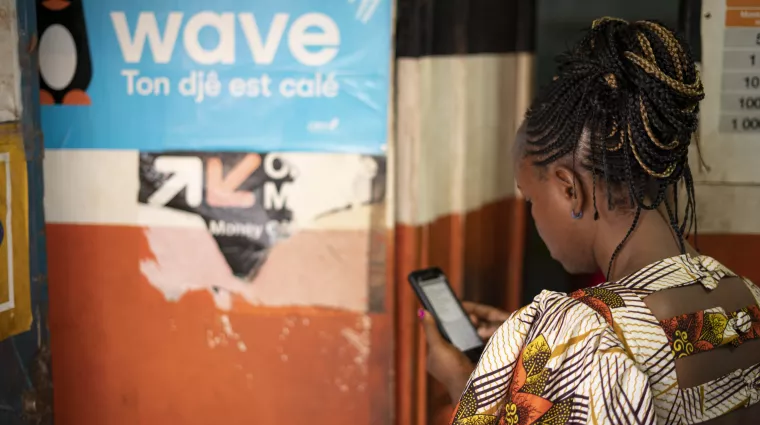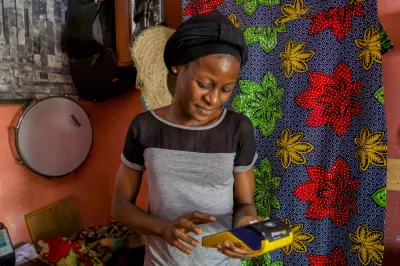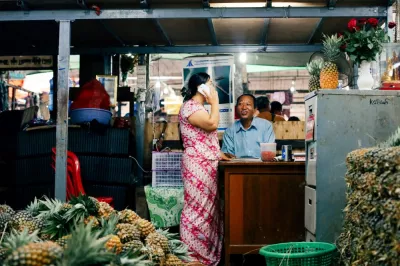The increase in account ownership over the past few years due to the explosion of digital financial services (DFS), further accelerated during the COVID-19 pandemic, is bringing low-income people into the formal financial sector. While financial solutions unlock life-changing opportunities by helping consumers save, borrow, and receive remittances, CGAP’s research shows that the nature and scale of financial consumer risks, particularly within digital finance, are evolving and growing. Is it time to reassess the existing approach to consumer protection? We think so.
CGAP and other industry players have already begun developing various solutions that can help address financial consumer risks. We believe that a responsible digital finance ecosystem approach is the way forward. Its success rests on involving key ecosystem actors, building up capacities, and fostering collaboration to identify consumer risks and develop customer-centric solutions, policies and services that result in financial services that generate good customer outcomes.
What have we learned so far about consumer risks in digital finance?
Consumer protection efforts have struggled to keep track of a fast-evolving DFS market where bad practices grow faster than the increase in DFS usage and faster than the remedies. Findex 2021 uncovered concerning insights around potential users’ lack of trust in financial systems and existing users’ financial worry. CGAP has identified dozens of consumer risks facing DFS users around the world, and emerging evidence suggests women are more at risk than men. Digital consumer credit is of particular concern, according to CGAP’s research, which revealed troubling issues with transparency, fraud, data misuse and more. Also, with more people creating digital footprints and with financial services providers using these data trails to build their customer base and to develop new products, people in low-income countries are exposed to risks, such as data abuse and cybercrime.
Why is effective consumer protection rooted in building a responsible digital finance ecosystem?
Despite all the progress made in the past few years in the consumer protection space, the rapid digitization of financial services, the arrival of many new types of providers, the limited financial and digital literacy of consumers, and loopholes in the regulatory and supervisory frameworks require a more holistic approach. Consumers, DFS providers, policy makers, standard-setters, consumer associations, and market facilitators (such as funders) together constitute a digital finance ecosystem. They all play key roles in securing a responsible ecosystem by interacting in ways that protects and ensures positive outcomes for customers using financial services, especially poor, underserved, and vulnerable consumers. While a responsible digital finance ecosystem requires a multifaceted infrastructure and policy framework to ensure its success, CGAP calls for action around three primary conditions (3 Cs) that we believe are necessary to building this ecosystem: a Customer-centric approach, where all actors have the necessary Capability to ensure customers are served responsibly, facilitated through structured Collaboration mechanisms.
 Woman uses her mobile to access digital financial services
Woman uses her mobile to access digital financial services
In addition to the 3 Cs, CGAP aims to explore different kinds of solutions leveraged by different actors within the ecosystem that aim to address key stages of consumer risk management, such as prevention, identification, and mitigation. While many new tools are available to assess the situation and mitigate consumer risks in digital finance—and notable progress has been made by all the key actors—we believe we need to connect all the dots, rather than continue with a piecemeal approach. We began piloting this approach in the region of West African Economic and Monetary Union (WAEMU) through a Digital Finance Consumer Protection Lab that has started work in Côte d'Ivoire, Senegal and Burkina Faso.
How can we foster a responsible financial ecosystem and monitor progress?
Ensuring the success of a responsible digital finance ecosystem entails integrating consumer voices into financial regulations, particularly the voices of vulnerable consumers, which can be accomplished by engaging consumers associations, analyzing social media, and setting up consumer panels within regulatory authorities. It also entails new approaches to data privacy and protection in addition to monitoring collective progress and measuring success. A customer outcomes-based approach is emerging as promising consumer protection frameworks where the regulatory focus shifts from provider compliance with prescriptive check-the-box rules to customer results or outcomes achieved through provider actions.
CGAP works with financial authorities to help them understand the risks generated by service providers through market monitoring tools and collaborates with the providers on monitoring customer outcomes throughout the customer's financial journey. We also work with DFS providers who have a critical role to play—either individually or through industry associations—to adopt customer-centric business models that create more value for customers while improving their bottom line. Our collaborations with several international funders as well as international partners, such as AFI, FinCoNet, SPTF, GSMA, Toronto Centre, Dvara Holdings, and the Responsible Finance Forum, are essential to enhancing knowledge and supporting capacity building in the ecosystem.

CGAP's Market Monitoring Toolkit aims to help supervisors identify, understand, and track financial consumer risks, behaviors, and outcomes which allow for more preemptive and forward-looking supervisory work.

How can financial consumer protection authorities bridge the regulator-consumer gap and ensure the financial marketplace is fair and balanced for all consumers? One promising solution is consumer advisory panels.







